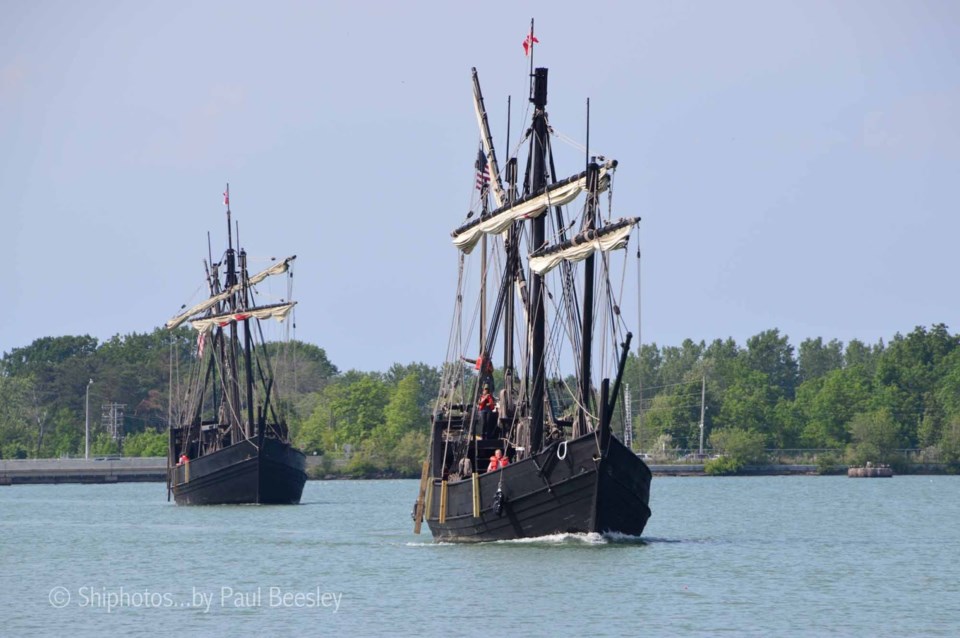Perhaps the most interesting vessels that have ever been brought up the canal were the Spanish caravels, the Nina, the Pinta and the Santa Maria, which passed through on their way to Chicago for the World’s Fair, while the New Bedford whaling vessel bound for the same port also attracted a great deal of attention.
Of the private yachts, many are admired for their handsome equipment, but the most important one, because of association, was the Evangeline, the missionary boat sent out from England by the Prince of Wales for the use of Bishop Sullivan in Algoma diocese, and manned entirely by Ojibbeway Indians.
In 1866, the British navy was represented in the Welland Canal by Her Majesty’s Ships, Heron, Cherub, and Britomart, which passed through in order to protect the shores of the upper lakes from the Fenians.
In 1895, an American vessel bound for Cuba passed down the canal, and it was only when she was safely out of Canadian waters that her ultimate destination was known; she had been fitted out at a United States port for filibustering service on the coast of Cuba.
In December, 1897, the U.S. man-of-war, Yantic, was allowed to go through, as she carried no guns and her government had promised that she should be used merely as a training ship at Detroit.
Until 1845, vessels were locked through on Sundays, but in that year a lawsuit was brought against the government, with the result that the Sabbath Observance law was strictly enforced on the canal until 1876. Those chiefly instrumental in bringing this about were John Ker, William James, William Beatty and the Rev. T. B. Fuller. From 1876 until 1897, the canal was closed on Sundays only between the hours of 6 a.m. and 8 p.m.
In 1895, the total number of vessels passing through the canal was 2,222 while the amount of freight transported was 869,595 tons. The tolls collected amounted to $138,713.64.
In 1895, 469,779 tons of freight were carried through the canal from one U.S. port to another.



